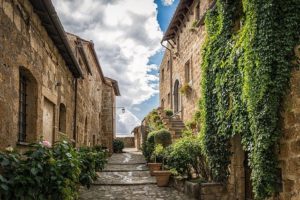4 Tips To Prevent Mold At Home

Mold is often an issue for many home-owners and home-buyers. No one likes that musty smell, which is a tell-tale sign of mold growth in your home. And once mold has taken up residence, it’s hard to get rid of it. In this article, we’ll look at what causes mold, which homes are more affected, and what types of mold are dangerous to our health. Then, we’ll look at some simple tips to prevent mold in your house.
The trickiness of mold makes prevention a critical issue when considering the health and safety of your home. Prevention is much easier than having to clean and eradicate mold that has already spread to several areas of the house.
The trickiness of mold makes prevention a critical issue when considering the health and safety of your home. Prevention is much easier than having to clean and eradicate mold that has already spread to several areas of the house Share on XCAUSE OF MOLD GROWTH IN HOMES
Mold needs three important things to grow: consistent moisture, limited airflow, and food. Any areas that remain moist without airflow have the potential for mold growth. Mold likes to feast on materials such as drywall, carpet padding, dust, mites, and some plant and bacterial cellulose1,2.
 WHICH HOMES ARE MORE LIKELY TO HAVE MOLD ISSUES?
WHICH HOMES ARE MORE LIKELY TO HAVE MOLD ISSUES?
A common myth is that older homes are more likely to be full of mold, but this may not be true. In fact, older homes tend to have more airflow, and the positioning of water faucets and bathrooms help prevent widespread water issues. Also, older homes tend to have a more diverse and rich microbiome that helps naturally balance out mold2,3.
Newer homes, on the other hand, are more tightly built, which reduces air circulation. They also contain more building materials that mold likes to eat2,3. Lastly, newer homes have a less diverse microbiome because they are cut off from outside soil-based microbes that would otherwise balance out mold3,4.
Mold is also likely to be an issue in homes situated in humid climates or where there has been a catastrophic flood. Also, over-crowded homes tend to have more problems with dampness and poor ventilation. Lastly, low-income rental units have higher mold issues due to less money spent on renovating and cleaning moldy areas in-between renters3.
However, the reality is that any home can be prone to mold if the conditions are right for their growth.
WHICH SPECIES OF MOLD IS DANGEROUS TO OUR HEALTH?
Common household mold includes species such as Cladosporium, Penicillium, Aspergillus, and Alternaria. The commonly feared toxic mold, otherwise known as black mold, is called Stachybotrys Chartarum5.
Common mold can cause allergic and asthmatic illness. In some cases, the illness can be severe if the person has immune issues or severe asthma and allergies. However, toxic black mold can be life-threatening, especially in people who have weakened immune systems. Thankfully, toxic mold is less abundant than common molds5.
Common mold can cause allergic and asthmatic illness. In some cases, the illness can be severe if the person has immune issues or severe asthma and allergies. However, toxic black mold can be life-threatening, especially in people who… Share on XNo matter which mold you have in your home, they can all cause health issues depending on your medical history and immune system. Mold spores themselves can cause immune system issues, but more likely, illness occurs from the exposure to the mycotoxins produced by certain mold species2,6,7.
There’s no doubt that mold can be a real nuisance, and the best way to deal with it is to prevent it from growing in the first place.
4 TIPS TO PREVENT MOLD IN YOUR HOME
There are several ways to prevent mold from growing in your home. Some suggestions are more straightforward than others, but it’s worth looking into all of them to ensure that your family is safe and healthy.
 1. Keep moisture as low as possible
1. Keep moisture as low as possible
Moisture collects in several ways: leaky faucets, condensation, accidental spills, flooding, a build-up of humidity in kitchens and bathrooms, and leaks around the shower and bathtub, to name a few.
Here are some tips to help keep moisture levels low2,8,9:
- Make sure that all leaks or water accidents cleaned and thoroughly dried. Be extra vigilant to look for places that water may have escaped, such as under carpets or floor tiles.
- Kitchens, bathrooms, and laundry rooms are prone to mold because of their high-incidence of water leaks and condensation. Be sure to check hidden areas for moisture build-up. Check faucets and water tubes for leaks or condensation. Make sure the exhaust pipe from dryers is intact.
- It might be worth it to buy indoor humidity monitors to put in a few locations around your home. They are relatively inexpensive and can help you understand moisture changes throughout the seasons.
- For high-moisture areas, consider dehumidifiers or renovations that keep moisture in check.
Next, we’ll talk about ventilation because you can’t keep moisture low without proper airflow.
 2. Proper Ventilation
2. Proper Ventilation
Good ventilation is vital in helping to keep moisture levels down, and it requires both air flow and circulation. Proper overall ventilation will help prevent moisture build-up in areas that are hidden from view such as tight corners, under carpets, or behind furnaces.
Here are some tips to improve ventilation in your home2,8,9:
- If the outside air is dry and warm (not humid), open the windows to let air come through.
- In cold weather, when there’s more condensation, keep the windows shut but use fans to circulate the air. Check for condensation around windows and doors in the colder months.
- Be sure that your air ducts and filters are obstruction-free and operating correctly. Also, be sure to check for mold in these ducts, furnaces, and air-conditioning units as they can continue to spread mold throughout the house.
- In areas like the bathroom or kitchen, make sure the ceiling and stove fan is working well.
- In areas prone to moisture that are also low-traffic (such as basements, laundry room, and crawl spaces), consider a dehumidifier that also has a fan to circulate air.
 3. Make Small Structural or Cosmetic Changes
3. Make Small Structural or Cosmetic Changes
Making a few changes around your home will help prevent conditions with which mold will take up residence and grow.
Here are some ideas for structural or cosmetic changes that can help prevent mold in your home2,8,9:
- If possible, remove carpets in favor of hardwood, tile, or laminate flooring. Be sure that the floor underneath is dry and mold-free before putting down new hardwood, tile, or laminate.
- Don’t store items on the floor or in paper boxes. Mold loves to eat paper and dust that accumulates in these items. Mold growth in stored items is especially problematic if they’re kept in damp areas like basements. Consider purchasing shelves or storage bins to keep things off the floor and protected from moisture.
- Consider upgrading or repairing your heating, air-conditioning, or ventilation system in your home if required. Many issues of mold, due to problems with these systems, can be prevented by ensuring they’re operating well and up to code.
- Ensure that outside water drainage moves water away from the foundation, rather than towards it.
- Make sure that materials used in renovation and construction (i.e., drywall and wood) are adequately sealed if they’re near a water source. Mold loves to feast on these materials, so don’t give them any moisture to help them grow.
 4. Choose Your Cleaning Products Wisely
4. Choose Your Cleaning Products Wisely
Many of us think that applying bleach and corrosive cleaning products will eradicate mold, but this is not the case. These products can often disturb the environmental microbiome as well as adding vapors that contribute to chemical sensitivity in humans. We are learning that a healthy microbiome in the home provides a balance against these microbes naturally10,11.
Here are some tips around choosing cleaning products to help prevent mold growth:
- Consider using Homebiotic Surface Cleaner to clean surfaces naturally without harsh chemicals that damage your home biome. The Homebiotic Surface Cleaner and Nano Sponge are extremely effective at cleaning without disrupting the microbiome.
- Consider getting a probiotic solution, such as Homebiotic Probiotic Spray, to prevent the causes of musty odors in your home naturally. The Homebiotic Probiotic Spray is made with healthy soil bacteria and is 100% safe for your home, family, and pets.
CONCLUSION
Hopefully, you know more about how mold grows, which homes are more affected, and how mold can be dangerous for our health. The prevention tips discussed above may help you in making decisions about reducing moisture, ensuring proper ventilation, making structural or cosmetic changes, and choosing cleaning products.
Mold will likely always be a part of our lives, but we can learn to live with it in better harmony while improving our mold prevention strategies.
REFERENCES
1.https://en.wikipedia.org/wiki/Indoor_mold
2.https://www.euro.who.int/__data/assets/pdf_file/0017/43325/E92645.pdf
3.https://www.sciencedirect.com/science/article/pii/S0013935115000304
4.https://www.sciencedirect.com/science/article/abs/pii/S1471490615000022
5.https://www.cdc.gov/mold/stachy.htm#Q3
6.https://www.ncbi.nlm.nih.gov/pmc/articles/PMC3492391/
7.https://www.who.int/bulletin/archives/77(9)754.pdf
8.https://www.nedcc.org/free-resources/preservation-leaflets/3.-emergency-management/3.8-emergency-salvage-of-moldy-books-and-paper
9.https://iseai.org/your-definitive-mold-clean-up-guide/
10.https://journals.plos.org/plosone/article?id=10.1371/journal.pone.0064133
11.https://err.ersjournals.com/content/27/148/170137
